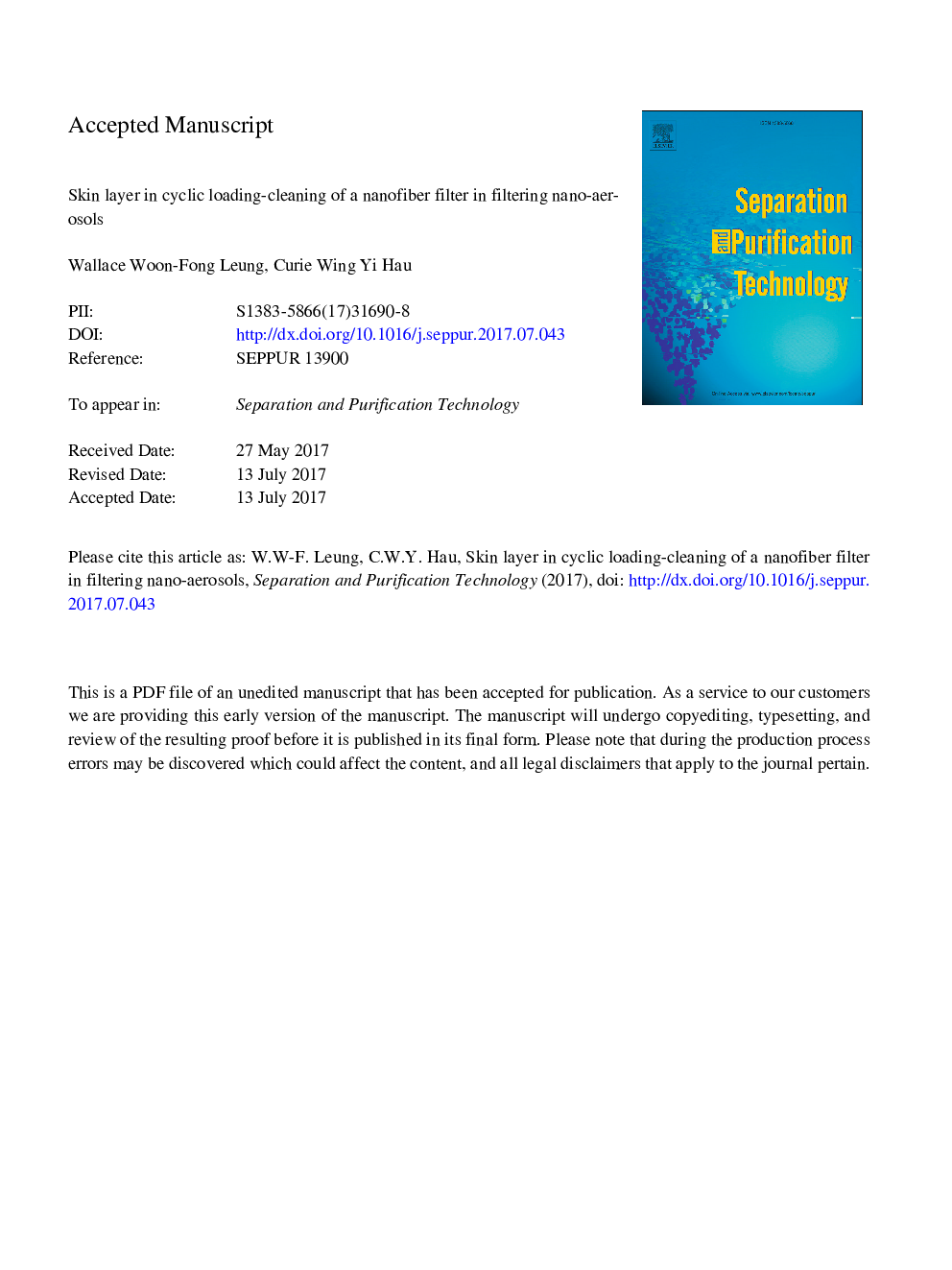| Article ID | Journal | Published Year | Pages | File Type |
|---|---|---|---|---|
| 4989814 | Separation and Purification Technology | 2017 | 41 Pages |
Abstract
The “skin” layer, a thin region upstream of the nanofiber filter, plays a pivoting role in controlling the pressure drop excursion of the filter. We model the skin layer to be made up of numerous fine capillaries and examine how continuous aerosols deposited in the capillaries affect rapid rise in pressure drop followed by bridging of aerosols across the capillary openings leading to more bridging and ultimately formation of cake on top of the bridges and filter surface. We have been able to describe the deposition of aerosols in the capillary pores for depth filtration, the deposition of aerosols in the cake (surface filtration), and the intermediate bridging regime between these two. We can depict the complete pressure drop excursion including the S-shaped curve behavior from depth filtration transiting to surface filtration for a filter with severe skin effect. Our prediction matches extremely well with the 6 cycles of loading/cleaning on a 280-nm nanofiber filter subject to challenging nano-aerosols, 50-400 nm. During cyclic loading and cleaning, the porosity and permeability in the skin layer for our experiment drop to 68% and 11-21% of their original values, respectively, and the effective pore diameter also drops from 1.2 to 0.6 μm.
Related Topics
Physical Sciences and Engineering
Chemical Engineering
Filtration and Separation
Authors
Wallace Woon-Fong Leung, Curie Wing Yi Hau,
